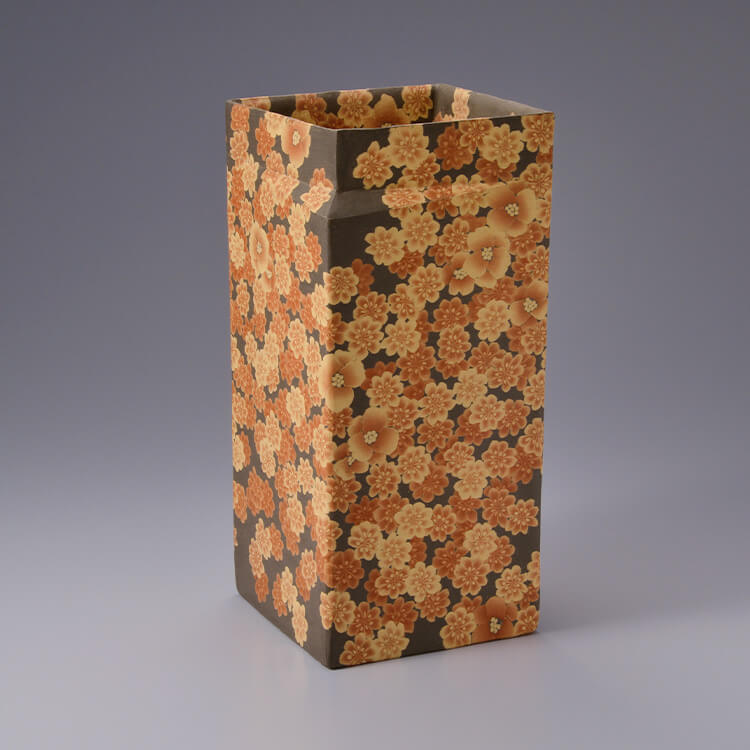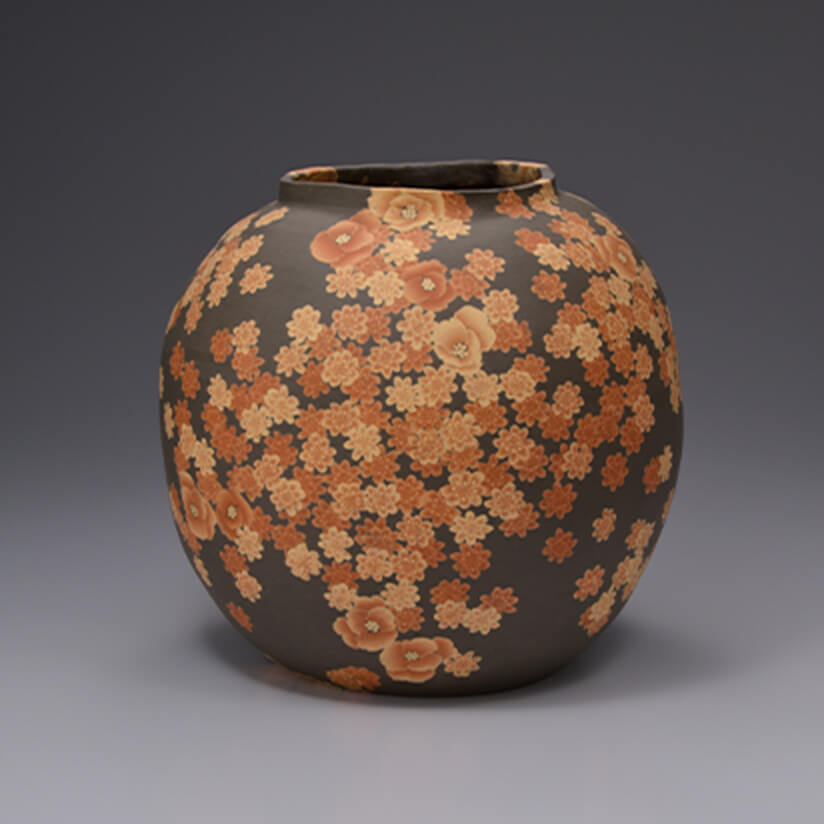
Photo: 無名異練上花紋角壺 by Sekisui Ito Official Website
On the remote Sado Island, located in Niigata Prefecture, lies a ceramic tradition quietly passed down through generations since the late Edo period.
At the heart of this legacy is the Sekisui Ito Kiln, home to the unique and captivating art of Mu-myōi-yaki (Mu-myōi ware).
The Soul of the Clay: Rich Iron-Red Earth Called “Mu-myōi”
Mu-myōi is a distinctive reddish-brown clay rich in iron, unique to Sado Island.
The process begins by carefully sieving the clay, purifying it with water, drying it, and kneading it to achieve the perfect consistency for pottery.
Unlike major pottery-producing regions, Mu-myōi ware has remained small-scale. At the Sekisui Kiln, every step—from preparing the clay to shaping, decorating, and firing—is done entirely by the artist’s own hand.
This dedication brings a deep sense of intimacy and craftsmanship to each piece.
Yohen: Letting the Flame Paint Its Own Story

Photo: Yohen by Sekisui Ito Official Website
One of the most striking features of Mu-myōi ware is the technique called “Yohen”, or kiln transformation.
As flames dance unpredictably inside the kiln, they touch the surface of the pottery in varying ways, causing the clay to shift in color and texture.
The artist must read the movement of fire, calculate its behavior, and anticipate its effects.
The result is a form of beauty born from both intention and chance—each piece truly one-of-a-kind.
Neriagé: Patterns Born from the Clay Itself

Photo: Neriagé by Sekisui Ito Official Website
Another cherished technique at the Sekisui Kiln is “Neriagé”, or layered clay.
By combining clays of different colors, the artist creates intricate patterns within the body of the work—not painted on the surface, but embedded throughout.
Unlike painted lines, the patterns have a gentle, organic fluctuation unique to the method.
They continue from the outer surface deep into the interior, as if the piece itself breathes with quiet rhythm.
The Legacy of Sekisui: Generations of Tradition and Innovation
The Sekisui Kiln was founded in the Tenpō era (1830–1844) by Tomisaburo Ito (also known as Haguchiya Hyoei).
His grandson took on the name Sekisui Ito, and the name has been passed down through the generations—from the second, third, and fourth Sekisui to the present.
Over the decades, the Sekisui family has earned recognition at numerous domestic and international exhibitions and world expositions. Their works have also been presented to the Imperial Family of Japan.
The fifth Sekisui Ito gained widespread acclaim, receiving prestigious awards at the Japan Traditional Crafts Exhibition, the Japan Ceramic Art Exhibition, and more.
In 2003, he was designated a Living National Treasure (Holder of Important Intangible Cultural Property) of Japan.
In 2024 (Reiwa 6), he adopted a new name: Sekijin Ito.
Bringing a Touch of Tradition Into Everyday Life
Because of the high iron content in Mu-myōi clay, the pieces are fired at extremely high temperatures, becoming remarkably hard.
Tap one gently, and it resonates with a metallic sound—clear, strong, and beautiful.
To bring a single Mu-myōi piece into your daily life is to invite in a story of earth, fire, and centuries of artistry.
In the midst of a busy world, perhaps it is such quiet, crafted beauty that brings richness to the soul.



コメントを残す